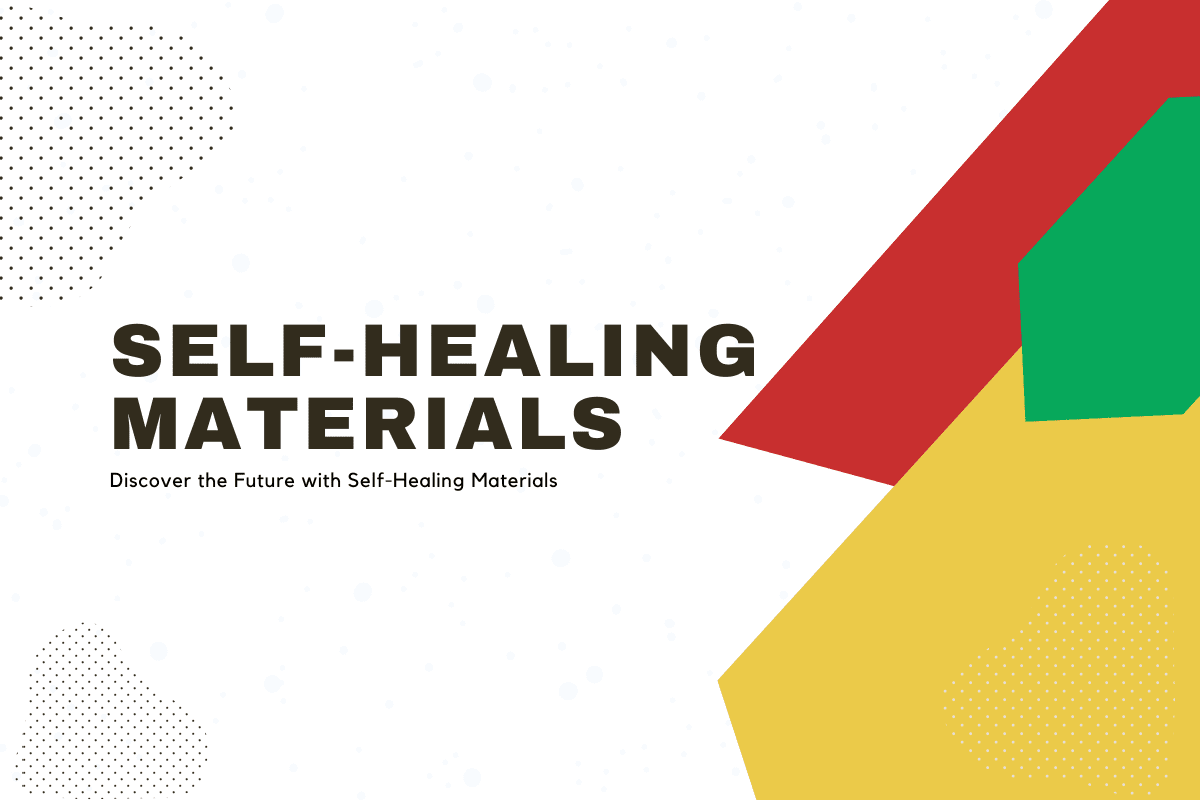Imagine a world where materials can repair themselves, just like the human body. This fascinating concept has become a reality with the advent of self-healing materials or autonomous materials. These innovative substances have the ability to recover from damage without any external intervention. They have the potential to revolutionize various industries, from manufacturing to construction. In this article, we will explore the remarkable capabilities of self-healing materials and their impact on the future.
Introduction
Self-healing materials are a groundbreaking development that holds great promise for enhancing the durability and longevity of various products. Unlike traditional materials, which deteriorate over time and require frequent repairs or replacements, autonomous materials have the ability to regenerate themselves. This opens up new possibilities for creating resilient and sustainable products.
Understanding Self-Healing Materials
Self-healing materials (Link) are designed with a unique internal structure that enables them to repair damage. They can sense the presence of a crack or other forms of damage and initiate a healing process. This process can involve the release of healing agents, such as liquids or polymers, that fill in the damaged area and restore the material’s integrity.
Mechanisms of Self-Healing
There are several mechanisms through which self-healing materials can operate. One common approach is based on the use of microcapsules embedded within the material. When a crack occurs, these capsules rupture and release the healing agents into the damaged region, allowing it to heal.
Another mechanism involves the incorporation of reversible chemical bonds within the material. These bonds can break and reform when damage occurs, facilitating the self-repair process. Additionally, materials can be designed to have shape memory properties, allowing them to revert to their original form after sustaining damage.
Also Read: From Sci-Fi to Reality The Rise of Humanoid Robots
Applications in Manufacturing
Self-healing materials have significant applications in the manufacturing industry. They can be used to create more robust and long-lasting products, reducing the need for frequent repairs or replacements. For example, self-healing coatings can protect surfaces from scratches and corrosion, prolonging the lifespan of objects such as cars or electronic devices.
In the aerospace industry, autonomous materials can enhance the structural integrity of aircraft components. By automatically repairing cracks or damage caused by wear and tear, these materials improve safety and reduce maintenance costs. Similarly, self-healing polymers can be utilized in the production of flexible electronic devices, ensuring their longevity despite bending or stretching.
Self-Healing Materials in Construction
The construction sector is another area where self-healing materials show immense potential. Concrete, the most widely used construction material, is prone to cracking and deterioration over time. By incorporating self-healing properties into concrete, the lifespan of infrastructure can be significantly extended.
Self-healing concrete works by incorporating healing agents, such as bacteria or polymers, into the mix. When cracks appear, these agents are activated and fill in the gaps, restoring the material’s strength. This technology has the potential to revolutionize the construction industry by reducing maintenance costs and increasing the sustainability of buildings.
Advantages and Limitations
The use of self-healing materials brings several advantages. It extends the lifespan of products, reduces maintenance and replacement costs, and contributes to a more sustainable and resource-efficient economy. Additionally, autonomous materials can enhance safety by preventing catastrophic failures caused by undetected damage.
However, there are limitations to consider. The production of autonomous materials can be complex and costly, making them less accessible for some industries. The healing process may also have limitations in terms of the size and type of damage that can be repaired. Further research and development are necessary to overcome these challenges and unlock the full potential of autonomous materials.
Future Implications
The field of self-healing materials is constantly evolving, and its future implications are exciting. Researchers are exploring new mechanisms and materials to improve the healing capabilities of these substances. As advancements continue, we can expect to see autonomous being integrated into a wider range of applications, including consumer products, healthcare, and renewable energy.
The development of autonomous also aligns with the growing demand for sustainable solutions. By prolonging the lifespan of products and reducing waste, these materials contribute to a more circular economy and reduce our environmental footprint.
Conclusion
Self-healing materials have the potential to revolutionize numerous industries by enabling products to repair themselves. These materials offer enhanced durability, reduced maintenance costs, and increased sustainability. While there are challenges to overcome, ongoing research and development will pave the way for even more advanced autonomous in the future.
FAQs
Q1. How do self-healing materials work?
Autonomous materials can repair damage by releasing healing agents or utilizing reversible chemical bonds within the material.
Q2. What are the advantages of self-healing materials?
Autonomous materials extend product lifespan, reduce maintenance costs, enhance safety, and contribute to sustainability.
Q3. Can self-healing materials be used in construction?
Yes, autonomous materials, such as self-healing concrete, have applications in the construction industry and can improve infrastructure durability.
Q4. Are self-healing materials expensive to produce?
The production of autonomous materials can be complex and costly, but ongoing research aims to make them more accessible.
Q5. What is the future outlook for self-healing materials?
The future of autonomous materials is promising, with ongoing advancements and potential applications in various industries.




